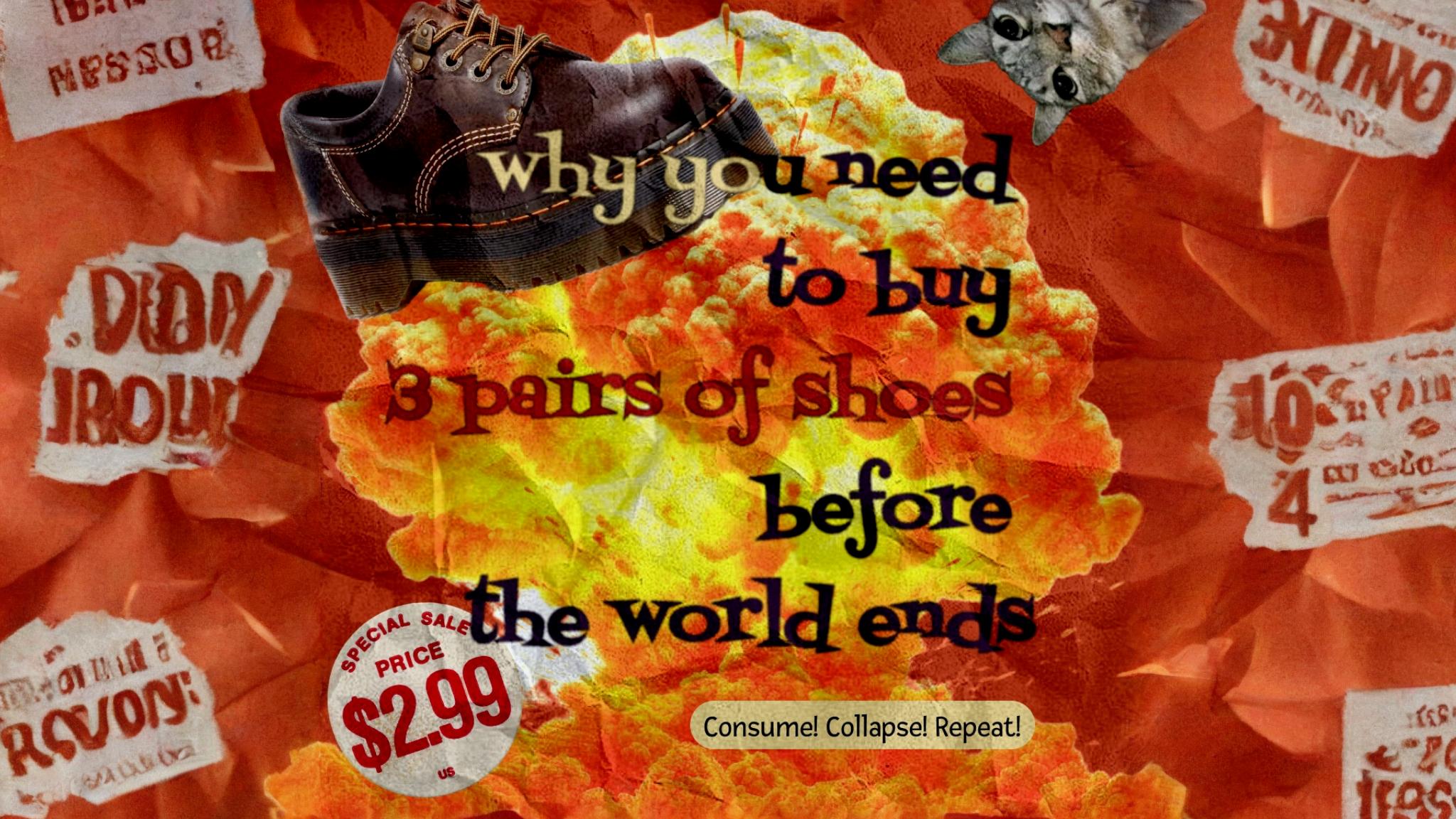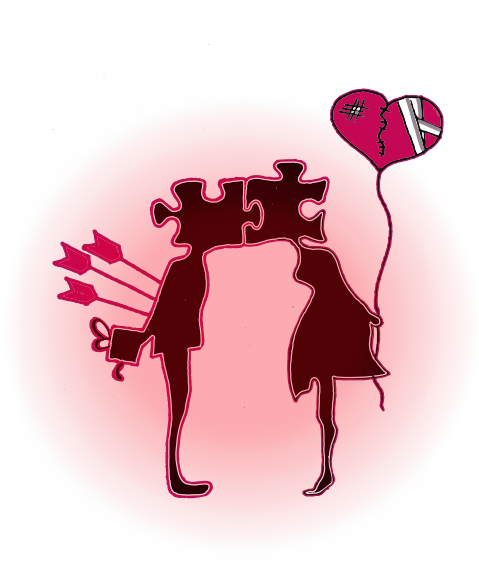

Body of IITR

Disclaimers/ Assumptions central to the hypothesis presented under:
Follow it at your own peril.
He sees her at work every day; her low, mellifluous voice soothes him over the cacophony of ringing phones. He watches, gasping, enthralled by her bewitching smile. She gracefully tucks her straight, auburn hair behind her ears. A sigh escapes his lips; he’s new to the place, and she feels awfully familiar.
She catches him looking at her. He quickly looks away, blushing.
He tries to think of the last time someone made him blush. He marvels at her perfection. There couldn’t possibly be anything he’d want to change about her.
Is this love?
If you’ve been watching too many Hollywood movies, perhaps it is.
If you prefer Bollywood, a buffet of stalkerish tendencies, threats to slit wrists, letters written in blood, and an undying enthusiasm can be said to constitute this emotion.
If you’ve grown up in an orthodox Indian household, love is embodied in the act of the patriarch bringing home the bread, or the act of chiding children when they do something “wrong”, never being openly expressed.
If you’ve been particularly unlucky, continuous emotional and physical abuse can also seem to be manifestations of a deeply-rooted love.

But none of us have a singular, isolated mode of existence; we are a part of many miscible worlds, armed with a power to introspect, retrospect, and theorize. Our conceptions of love are shaped by the many relationships we observe, as well as external sources (movies, books and music). There are potentially infinite ideas emanating from these sources; it is only upon introspection - upon evaluating each idea against the filter of our intuition - that additions or amendments are made. These, in turn, influence the way we express love.
It becomes important, at this point, to expose a rather troublesome impostor: Infatuation.
The narrative in the opening paragraphs encapsulates the illusion of love. The rather unthinking and indiscriminate overuse of the word ‘love’ has rendered people’s ability to tell apart ‘infatuation’ from ‘love’, useless. Perhaps infatuation is love in its infancy - but that’s where the overlap ends.
Infatuation can best be described as being in love with either
(i) The idea of someone: ill-informed conceptions we associate with their personality
(ii) The idea of being in love: wanting to be in love - either to tell every living soul about your predicament, or to enjoy the benefits you think it carries.
It is infatuation that is blind; love is a high-resolution image that captures a person in their entirety. It is (characterised by):
To begin with, love is rooted in irrationality1. What is meant by this is that one crosses the tipping point (i.e. the point at which one is said to have “fallen in love”) due to factors beyond their control. Thereafter, love becomes at least a partly conscious act. Giving one the freedom to act on their dreams and desires without being bogged down by obligations that are part of standardized contracts (i.e. of marriage, committed relationships, etc.) is the second characteristic of love – sans possessiveness.
Another less accepted feature of love is the conscious ignorance of flaws2. When one is in love, one does acknowledge the shortcomings of the other person, but chooses to overlook them.
Perhaps the best attribute of love is its unconditional nature. Although the expectation of a “reward” might exist, the person is okay with his/her love not being reciprocated; sadness may be the eventual outcome, but it is deemed to be worth it (i.e. the person continues to act on their love - refer assumption no. 1).
And lastly, the self-sacrificial nature of love. Doing things that are inconvenient or avoidable just because it means something to the other person/ benefits them in some way is a particularly irrational characteristic of love
The duration of love is not always indicative of its “trueness”; i.e. true love and lasting love are discernibly different. Lasting love can only be cultured when true love is supplemented by compatibility.
What, then, is compatibility? Two models come to mind:
(i) The MBTI model: The Myers-Briggs Type Indicator is a “psychometric instrument” that draws on the theories of Carl Jung (but has faced flak for being pseudo-scientific, having poor reliability and poor validity). Various parties have drawn on the theory to propose “ideal pairings”, the basic principle of which is stated under:
“The partner that we choose for ourselves will have a very different approach to dealing with the world. If we are laid-back and indecisive, our partner will be structured and decisive. If we are reserved, our partner will be outgoing. For all of our apparent differences, we will share a common vision of what’s truly important in life.” - The Personality Page
(ii) Games People Play: Eric Berne’s book analyses how two people in a relationship “transact”, drawing on the theories of Sigmund Freud. Given below is an extract from a popular tabloid:
“His theory argued that every person has three “ego states”:
The parent: What you’ve been taught
The child: What you have felt
The adult: What you have learned
When two people are really compatible, they connect along each tier. Pearson [a Couples Therapist] gave us a few questions for figuring out compatibility at each level:
The parent: Do you have similar values and beliefs about the world?
The child: Do you have fun together? Can you be spontaneous? Do you think your partner’s attractive? Do you like to travel together?
The adult: Does each person think the other is bright? Are you good at solving problems together?”
- The Independent
Both models stress on having outward differences (a response to our desire for completion, also adding an element of excitement) while having deeply-rooted similarities (i.e. values) and shared long-term goals (which keep them together).
“In this terrifying world, all we have are the connections we make.”
- BoJack Horseman
Perhaps love (the way we have defined it) does not exist. Perhaps love is incredibly selfish, egotistical, and extremely conditional. The thought that humans are incapable of this idealistic model of love is equal parts reassuring and saddening.
Or, perhaps, “true love” does exist - only, it comes with swords sheathed in scabbards of red and gold. People shy away from relationships that might cause them pain; it is this very fear that keeps them from experiencing the sort of pain that might ultimately give way to the spring of love. Kahlil Gibran captures it best :
“When love beckons to you, follow him, though his ways are hard and steep. And when his wings enfold you yield to him, though the sword hidden among his pinions may wound you.”